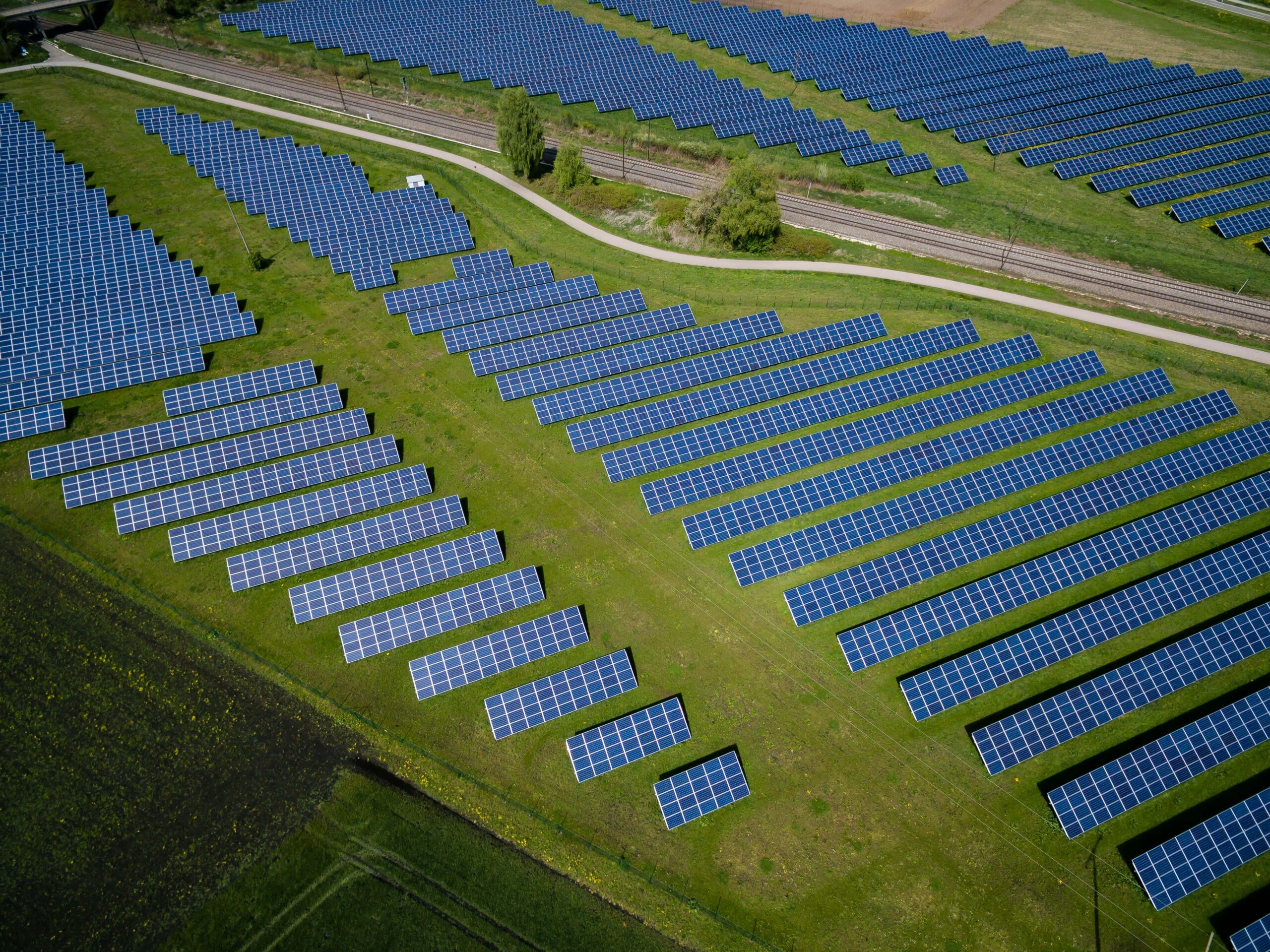Introduction to Renewable Energy Innovations
As the global community grapples with the pressing challenges of climate change and environmental degradation, the importance of renewable energy innovations has never been more apparent. These advancements are pivotal in ensuring sustainable development and in paving the way toward a cleaner, greener future. By harnessing the power of natural resources such as sunlight, wind, and water, we can significantly reduce our reliance on fossil fuels and, consequently, our carbon footprint.
The energy landscape is poised for transformation, with innovative technologies leading the charge. Innovations in renewable energy not only address environmental concerns, but they also have the potential to reshape energy consumption patterns significantly. For instance, advancements in solar photovoltaic systems, wind turbine efficiency, and energy storage solutions are facilitating a more flexible and resilient energy grid that can accommodate diverse energy sources. This shift is vital as we aim to meet the increasing energy demands of a growing population while combating climate change.
The forthcoming years promise groundbreaking developments that will redefine our relationship with energy. By 2025, we can expect to witness a variety of technologies that will enhance the efficiency, affordability, and accessibility of renewable energy sources. In this article, readers will gain insights into the top five innovations that are expected to make waves in the renewable energy sector. From emerging trends in hydrogen energy to advancements in smart grid technology, these innovations will not only influence global energy policies but also provide practical solutions for individuals and communities seeking sustainable energy options.
As we delve deeper into this topic, it is crucial to remain optimistic about the future of energy. Renewable energy innovations will play a key role in steering our society toward unprecedented levels of sustainability and resilience, ensuring a cleaner planet for future generations.
Advancements in Solar Energy Technology
Solar energy technology has experienced remarkable advancements, especially in recent years, signaling a significant shift in how we harness the sun’s energy. One of the most notable improvements is in solar panel efficiency. Traditional silicon-based solar panels have seen efficiency rates increase from approximately 15% to as high as 23% in recent models, driven by innovations that optimize light capture and conversion. This enhanced efficiency means that solar installations can produce more electricity from the same amount of sunlight, thereby improving the viability of solar power as a primary energy source.
Moreover, new materials, particularly perovskite solar cells, are revolutionizing the solar industry. Perovskite materials not only promise high efficiency—potentially exceeding 30%—but also offer lower manufacturing costs due to simpler production methods. This shift to perovskite technology allows for the economic scaling of solar solutions, making them more accessible to broader markets. Researchers are currently working on stabilizing these materials for long-term use, addressing previous concerns about durability and longevity.
The emergence of solar storage solutions is another pivotal advancement in renewable energy. Energy storage systems, such as lithium-ion batteries, now enable users to store excess energy generated during peak sunlight hours for later use. This capability is crucial in addressing the intermittency of solar power and increasing grid reliability. A notable example is Tesla’s Powerwall, which allows homeowners to optimize their energy use while significantly reducing reliance on fossil fuels. Additionally, large-scale projects, like the Hornsdale Power Reserve in Australia, demonstrate how advanced storage can stabilize energy supply and enhance the economic feasibility of renewable sources.
These advancements in solar energy technology not only illustrate significant growth but also underscore the renewable energy sector’s potential to mitigate climate change and decrease global dependence on fossil fuels. As these innovations continue to evolve, solar power is poised to lead the transition to a sustainable energy future.
Wind Energy: Turbine Innovations and Offshore Farms
Wind energy continues to see remarkable advancements, particularly in turbine technology and the expansion of offshore wind farms. The call for cleaner energy solutions has driven innovation, leading to the development of next-generation turbines that promise enhanced efficiency and reduced costs. Modern turbine designs utilize larger rotor blades and more advanced materials, allowing for greater energy capture even at lower wind speeds. The aerodynamic improvements in blade design contribute significantly to generating more electricity, thereby increasing the overall output of wind farms.
Offshore wind energy farms are gaining traction as an advantageous alternative to traditional land-based installations. The benefits of offshore wind farms include access to stronger and more consistent wind speeds, which translates to higher energy production. Studies have indicated that offshore wind farms generate approximately 40% more energy than their onshore counterparts, making them a preferable option for large-scale energy projects. Countries like the United Kingdom and Germany have invested heavily in building extensive offshore wind farms, setting a benchmark for future endeavors in renewable energy.
Recent research highlights the positive outcomes of offshore initiatives, showcasing projects like the Hornsea One in the UK. As one of the largest offshore wind farms in the world, it has demonstrated how technological advancements can propel the renewable energy sector. Additionally, the floating turbine technology is poised to unlock new regions for wind energy development, expanding the possibilities of harnessing wind power in deeper waters where traditional anchoring systems are not feasible.
Innovations in wind turbine design and the strategic placement of offshore farms illustrate the industry’s commitment to sustainability and energy independence. As researchers and engineers continue to enhance these technologies, wind energy will play an increasingly pivotal role in the global transition to renewable resources, ultimately aiding in the fight against climate change and fostering greener economies.
Breakthroughs in Energy Storage Solutions
The role of energy storage in the renewable energy sector cannot be overstated, especially as the demand for sustainable solutions increases. One of the major breakthroughs in this arena is the development of solid-state batteries. Unlike conventional lithium-ion batteries, solid-state batteries utilize a solid electrolyte instead of a liquid one, resulting in a battery that is safer, more efficient, and has a higher energy density. According to recent studies, solid-state batteries can potentially increase electric vehicle range by up to 50% while significantly reducing charging time. This is a pivotal advancement for electric mobility and renewable energy integration.
Another notable innovation is the emergence of flow batteries which utilize liquid electrolytes stored in separate tanks. These batteries can be scaled up easily, allowing for extensive storage capacities that are particularly beneficial for balancing intermittent renewable energy sources such as solar and wind. Research indicates that flow batteries can provide more than 10 hours of storage capacity, making them a viable option for grid management and energy reliability. Their long life cycle and low environmental impact further enhance their appeal within the renewable energy space.
In essence, these advancements in energy storage technologies are essential for overcoming the intermittency problems associated with renewable energy sources. By improving energy reliability and allowing for better grid management, battery innovations contribute to a more resilient energy infrastructure. The adoption of these technologies is expected to grow, with investments in energy storage projected to reach $10 billion by 2025. This underscores the importance of innovative energy storage solutions in creating a dependable and sustainable energy future.
The Role of Smart Grids and AI in Renewable Energy
In recent years, the transition towards renewable energy sources has gained significant momentum, and this revolution is being greatly facilitated by the emergence of smart grids and artificial intelligence (AI). Smart grids, which utilize advanced communication and control technologies, are transforming the way energy is distributed and consumed, thereby optimizing the integration of renewable sources such as solar and wind power. These systems enable real-time monitoring of energy flows, allowing for a more efficient allocation of resources and enhancing the reliability of electricity supply.
AI plays a crucial role in optimizing the performance of smart grids. It is employed to analyze vast amounts of data collected from various sources within the grid. This enables utilities to forecast energy demand more accurately and adapt their operations accordingly. For instance, AI algorithms can predict peak energy usage times, allowing energy providers to adjust their output from renewable sources to meet these demands efficiently. Additionally, predictive maintenance powered by AI enhances the reliability of renewable energy systems. By analyzing performance data and usage patterns, AI can identify potential failures before they occur, reducing downtime and optimizing maintenance schedules.
Several notable implementations of smart grid technology demonstrate its effectiveness in enhancing renewable energy distribution. For example, in California, the integration of smart meters has allowed consumers to manage their energy use more efficiently, leading to a notable decrease in overall consumption during peak hours. In addition, pilot projects in Europe have showcased how smart grids can seamlessly combine energy generated from wind farms with electricity from traditional sources, thus stabilizing the grid during variable weather conditions. Data collected from these initiatives indicate improved performance metrics, such as enhanced energy efficiency and a substantial increase in renewable energy utilization. This progress highlights the significant potential of smart grid technology and AI in shaping the future of renewable energy systems.
Conclusion: The Future of Renewable Energy Innovations
As we look forward to 2025 and beyond, the significance of the five key innovations in renewable energy cannot be overstated. These advancements—ranging from enhanced solar technologies to innovative energy storage solutions—represent not only a progressive shift towards sustainability but also a necessary adaptation to the challenges posed by climate change. By harnessing these technologies, we can reduce carbon emissions, enhance energy efficiency, and support greater energy independence across various sectors.
One of the most compelling aspects of these innovations is their potential to create new opportunities for individuals and businesses alike. For instance, by investing in solar panels or wind turbines for personal or commercial use, individuals can not only decrease their utility bills but also contribute to the broader effort of transitioning to a sustainable energy future. Collectively, these small actions can lead to significant environmental impact and stimulate economic growth through the creation of green jobs.
Moreover, it is essential for readers to consider their roles in this evolving landscape. Engaging in discussions about renewable energy, supporting local initiatives, and spreading awareness about sustainable practices can foster a deeper community understanding of the need for such innovations. Readers are encouraged to share their thoughts, experiences, or questions in the comments section below. Additionally, sharing this article on social media platforms can help spread the word and amplify the conversation around renewable energy advancements.
In conclusion, the future of energy is undoubtedly intertwined with these groundbreaking innovations. By embracing them and actively participating in the movement towards sustainability, we can all contribute to a cleaner, more resilient future for our planet. The journey ahead is promising, and together, we can make a difference in achieving our collective sustainability goals.





